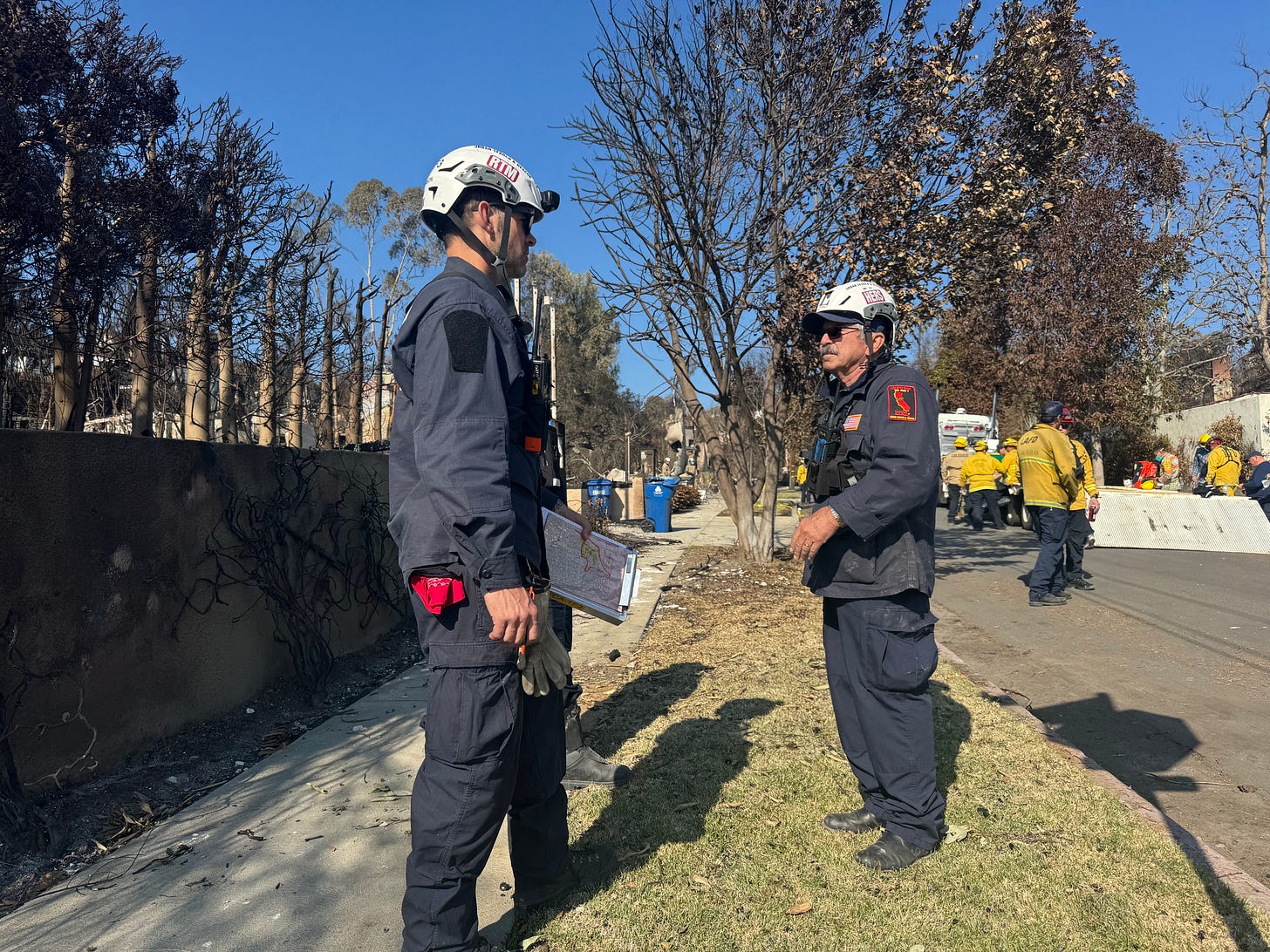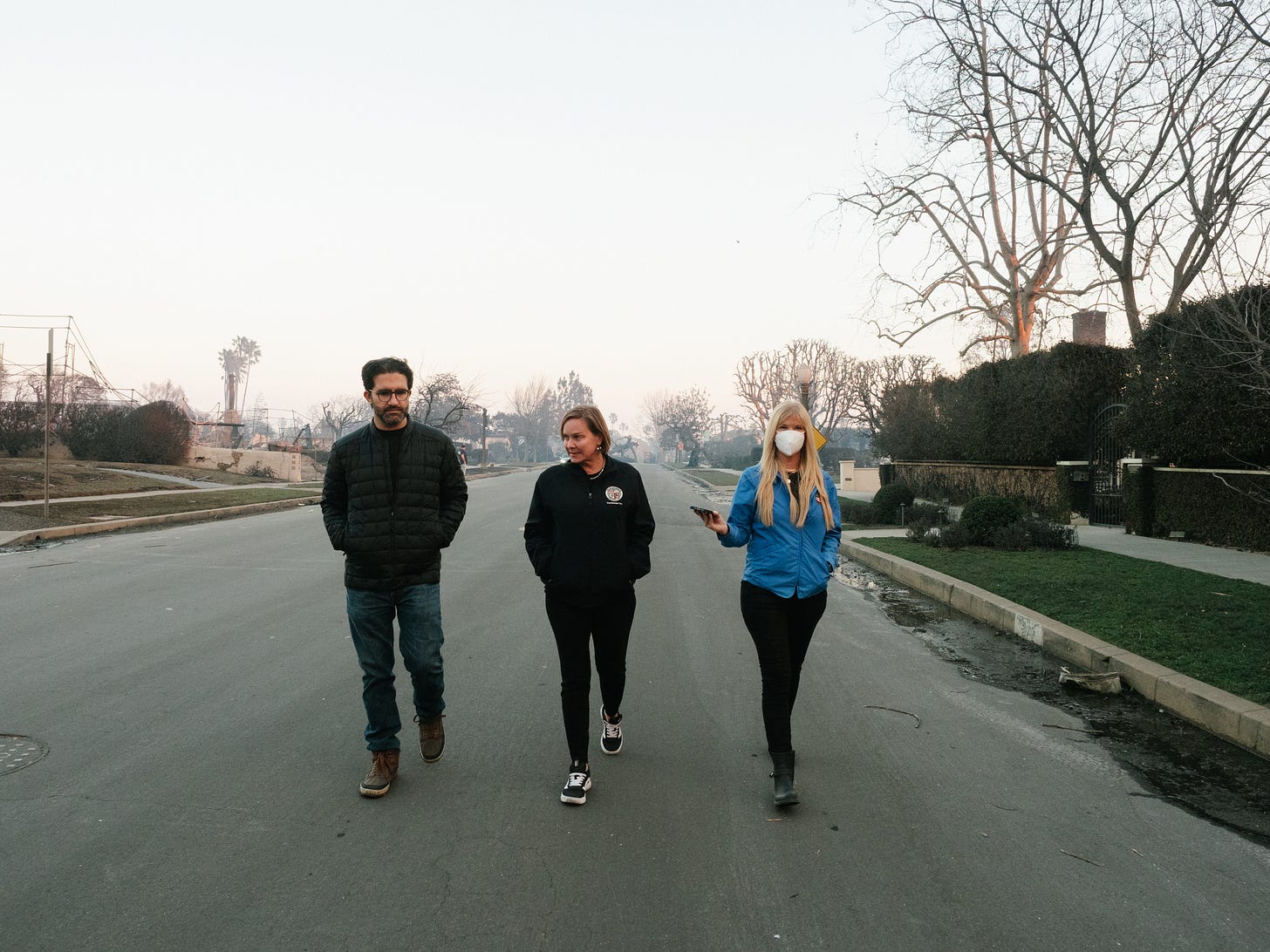When the Flames Rose, So Did the World: A Story of Unity in Los Angeles’ Wildfire Response
Global Solidarity Meets Local Resilience as Los Angeles Begins to Recover from Devastating Fires
LOS ANGELES — The fires that raged across Los Angeles’ hills and neighborhoods are finally beginning to recede, revealing scarred landscapes and communities left to restore their lives. Containment of the deadly Palisades Fire rose to 65% as fire crews again braved gusting Santa Ana winds, working to fully surround the burn area.
In the midst of destruction, a powerful demonstration of global solidarity and local resilience has emerged: international aid groups, domestic fire crews, and incarcerated firefighters—converging from far-flung corners and diverse backgrounds—have stepped forward to support the community in its time of need.
A Lifeline from Israel: One Heart’s Missio
n
Among the organizations answering the call is One Heart, an Israeli nonprofit civil aid group known for its work in crisis zones worldwide. Its volunteers arrived in Los Angeles on Saturday and have been on the ground, assessing the damage, and offering long-term recovery strategies.
“We want to connect from the volunteer and city sides to help everyone who needs it,” said volunteer Mor Sheleg
Sheleg recounted the team’s swift mobilization. “Our CEO called us and asked if we could come here as fast as we can. Within two days, we arrived.”
Since then, One Heart volunteers have frequented evacuation shelters and distribution centers, providing emotional support and mapping out needs. The scenes they encounter, they say, draw parallels to their experiences back home.
“The one thing we see very clearly is the similarity to the Gaza envelope we’ve seen,” said Gur Yonay. “Houses look similar to this, and the acts of people in front of the acts of Mother Nature. It reminds us of a warzone. Seeing families displaced is just heartbreaking.”
As firefighters and local officials keep the blaze at bay, Yonay says One Heart is focused on the next phase.
“If today the firefighters and Los Angeles teams are doing an amazing job responding to the immediate crisis, our job is to understand what comes next. What are the needs that fall between the cracks? In our experience, it’s often children, the elderly, and people with disabilities who are overlooked.”
One Heart’s approach to community recovery is rooted in firsthand observation and planning for the future. “The way we see work with communities is from the ground up. You’ve got to see the impact, the people evacuated, the communities broken. We went to shelters and distribution centers. The only next logical step is to see the fires. It’s the follow-up to what we do,” said Yonay.
Aid has poured in from around the world, with over 14,000 personnel—hailing from Texas, Oregon, Canada, and even an offer of 150 firefighters from Ukraine and 14 firefighters from Israel—joining the effort. “Many of the firefighters here, including myself, had been working for over 90 hours straight,” Oren Shishitzky. a spokesman for Israel’s Fire and Rescue Authority told the Jewish Telegraph. “Because most of the Americans were trained in Israel, they are familiar with how we operate, and they were able to easily relieve some of the burden on the crews, whether with regular fire response in local districts or in extinguishing the remaining wildfires."
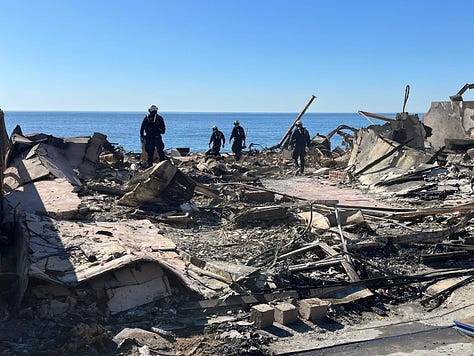
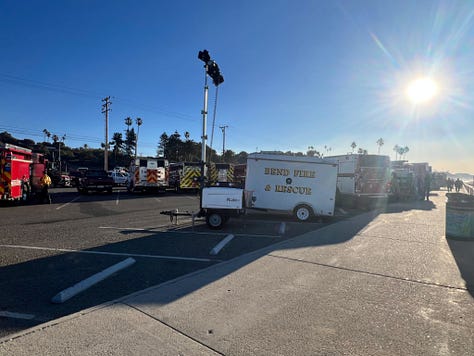

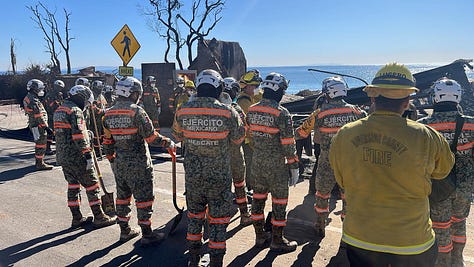
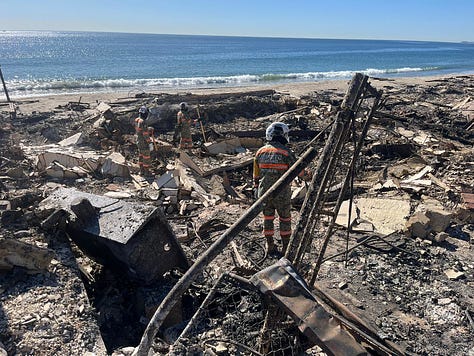
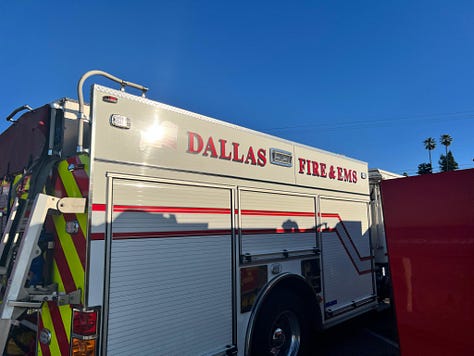
Over 70 firefighters from Mexico’s National Forestry Commission and Ministry of Defense have also joined the battle, digging firebreaks, conducting controlled burns, and safeguarding critical infrastructure.
Their presence, say Los Angeles officials, is indispensable. “Emergencies have no borders,” Los Angeles officials said. “We are deeply grateful to Mexico for their unwavering support during one of our greatest times of need.” In addition to fighting the flames, the Mexican crews offered outreach to Spanish-speaking communities, helping evacuees access updates on shelter availability and other vital resources.
Among those battling the Palisades Fire is a strike team from the California Department of Corrections and Rehabilitation (CDCR), providing crucial support in neighborhoods still struggling in the aftermath. Working alongside approximately 5,200 other firefighters, the team includes 141 CDCR staff who cut fire lines, remove fuel from behind structures, and patrol for potential flare-ups.
We requested a direct interview with the group but were informed none were being granted at the time. Instead, media information was provided via email. It described how Fire Chief Jesse Corrales of the CDCR leads the team assigned to the Palisades, immediately impacting suppression and recovery efforts. “When we first arrived at scene it was dark, power was out, the roads were filled with downed power poles, burning vehicles, rubble, and debris,” he said. “The fire was burning and spreading at a rapid rate.”
He pulled together 20 highly trained fire personnel from CDCR firehouses across the state, utilizing engines from Folsom State Prison, the California Institution for Men in Chino, Chuckawalla Valley State Prison, Mule Creek State Prison, and High Desert State Prison.
Despite progress in containment, red-flag wind warnings continue to fuel the risk of new flare-ups. “I have been in the fire service over 20 years and responded to well over 100 campaign incidents,” Corrales said. “This is one of the worst I’ve seen in terms of property damage and loss.”
The team’s primary responsibilities—fire suppression, triage, tactical patrol, mop-up, and community support—ensure hidden embers don’t reignite. During mop-up, CDCR crews methodically search beneath rubble, extinguish lingering heat sources, and, tragically, sometimes recover the remains of those who couldn’t escape. They also assist returning families in retrieving belongings, a process known as “re-populating.”
Councilwoman Traci Park has remained on the front lines in Pacific Palisades, assisting residents with evacuations, coordinating real-time emergency responses with her staff, and at times simply offering comfort.
“You know, these are people’s homes. This is where they’ve built their lives and raised their families,” Park said. “So many personal mementos and memories have just been completely wiped out. And those things are irreplaceable.”
During an interview with the Current a few days into the fires, Park described the scene as “apocalyptic,” recalling entire blocks reduced to “smoke and ash” and struggling to grasp the scope of the destruction. She has worked alongside her District Director Juan Fregoso, staff member Sean Silva, and the rest of her team to aid displaced residents—carrying pets into cars and recovering meaningful items for those who lost everything.
Fregoso recalled assisting an older woman who couldn’t load her pets and a man who saved only a lockbox containing precious mementos just days before his wife’s due date. “He was just breaking down,” Fregoso said, noting how that small recovery still “meant a lot to him.” The team also found glimmers of hope, like confirming a grandparents’ home had survived for two worried relatives. “It’s about doing everything we can to give people some peace of mind,” Fregoso added.
“We’ve been out here day and night,” said Sean Silva, a deputy from Venice who has worked tirelessly since the fire began. “People have lost so much—sometimes everything. Our job is to help them retrieve what’s left of their essential belongings, find some closure, and remind them they’re not in this alone.”
Park's History of Advocacy
Since taking office, Park has pressed for better public safety in fire-prone regions. “When people criticize me for not wanting to put road diets on our major evacuation routes, there is an actual reason why I have those concerns,” she said. “We’ve cut budgets where we shouldn’t, and we’ve added to a homeless crisis with little results. Meanwhile, critical public safety needs have gone unmet.”
Last Tuesday, Park introduced 26 motions at the Los Angeles City Council, targeting both immediate relief and long-term fire safety. She called on the Los Angeles Department of Water and Power (LADWP) and the Los Angeles Fire Department (LAFD) to explain hydrant failures and water shortages, and proposed a ballot measure to fund station repairs. “In the last two budget cycles, the fire department requested $20 million annually for repairs but received only a fraction of that,” Park noted. “We have to stop kicking the can down the road. Lives depend on this.”
Additional measures aim to help those who lost their homes by suspending rent for uninhabitable units and reimbursing payments already made. “We have to ensure that people who’ve lost everything aren’t burdened further,” Park said. “As a city, our singular goal is to ensure that residents have the resources to rebuild their lives and come home.”
“This isn’t just about rebuilding,” Park said. “It’s about learning from this tragedy and making sure we’re never caught unprepared again. These are their lives, in pieces. It’s hard to see, but it reminds us why it’s so critical to be here, listen, and act.
“We’ve seen unimaginable loss. But moments like this remind us that we can rebuild. That’s why we’re here—to help people take those first steps toward recovery.”





